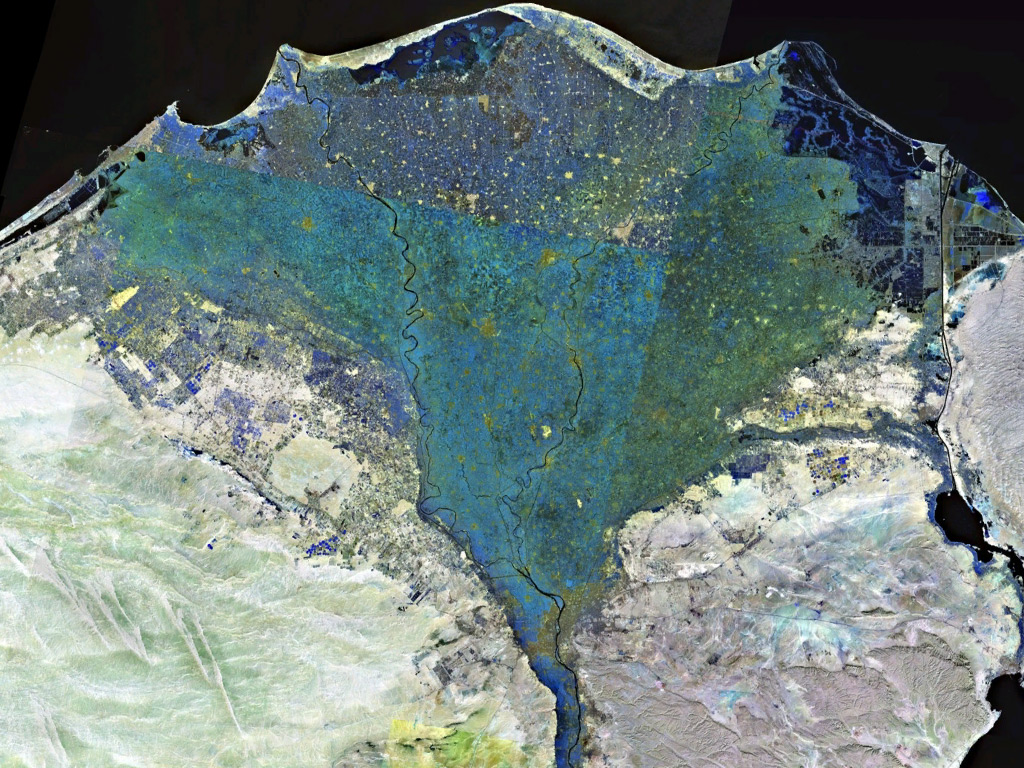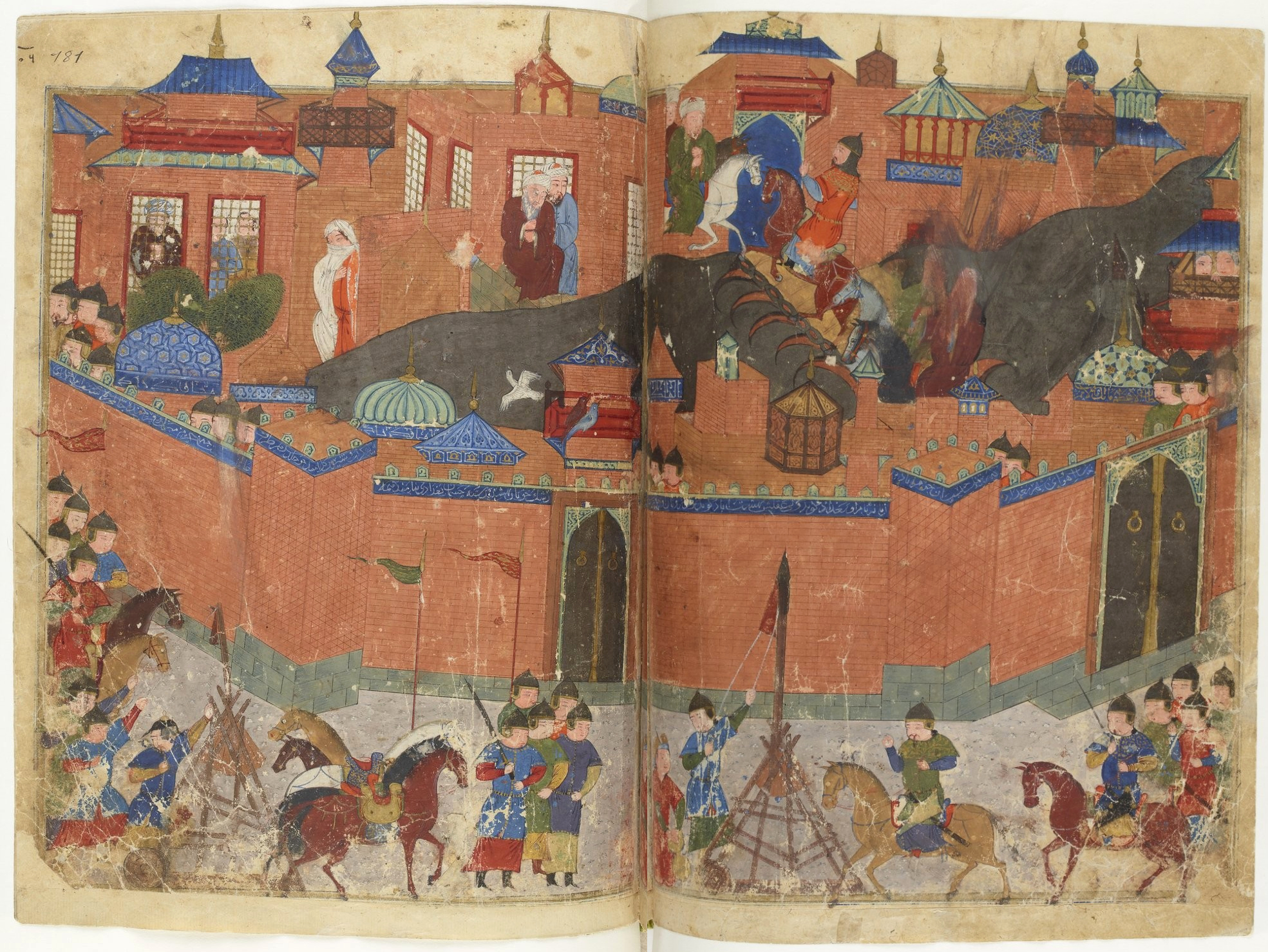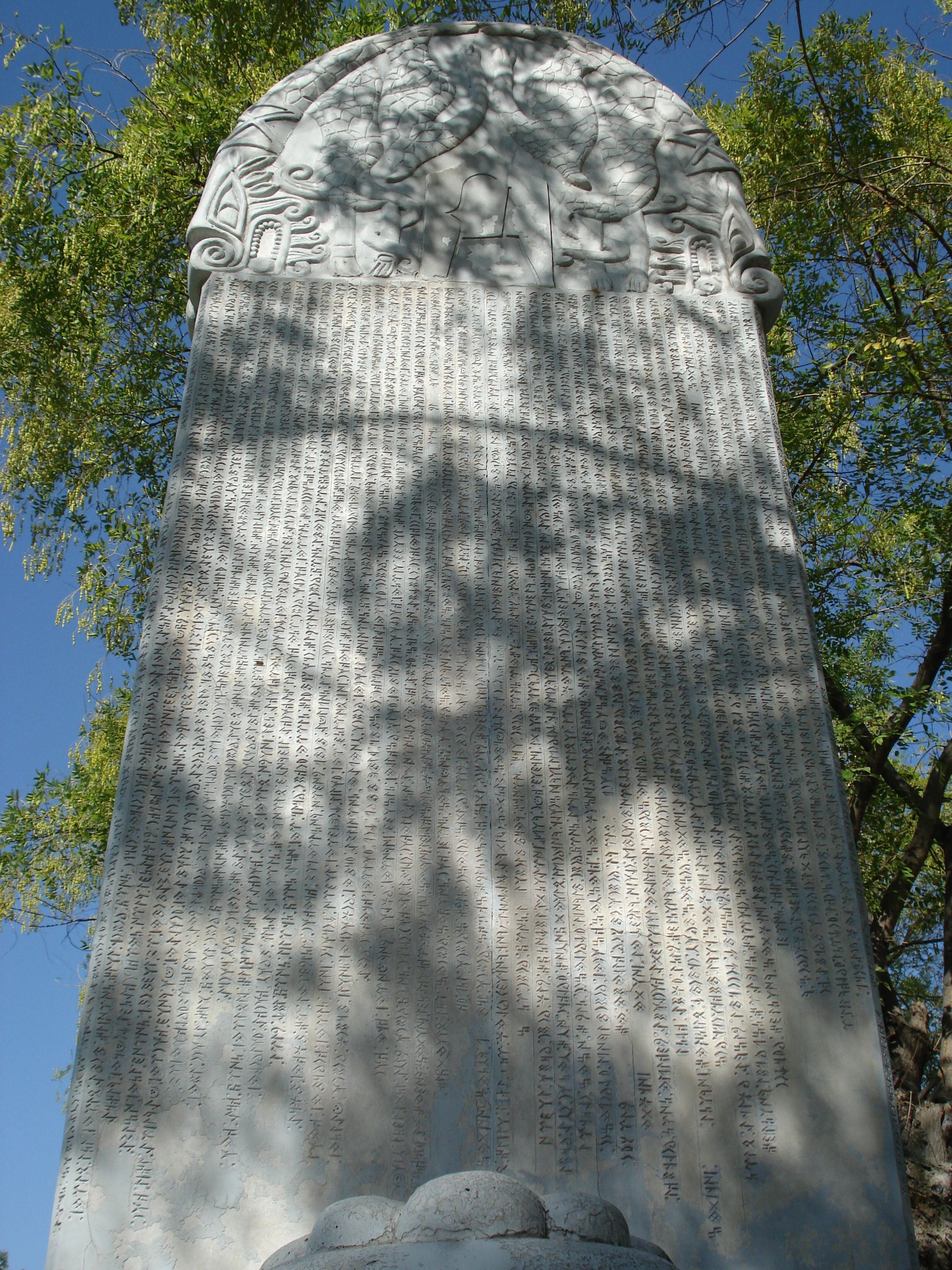|
Al-Adil Kitbugha
Kitbugha (), royal name: al-Malik al-Adil Zayn-ad-Din Kitbugha Ben Abd-Allah al-Mansuri al-Turki al-Mughli; ) (died 1303 CE) was the 10th Mamluk sultan of Egypt from December 1294 to November 1296. Background He was originally a Mongol (al-Turki al-Mughli) soldier in the Ilkhanid army of Hulagu. He was taken prisoner during the First Battle of Homs in 1260.Ibn Taghri, Sultanante of al-nasir Muhammed. He was purchased by Qalawun and became one of his Mamluks then later Qalawun manumitted him and granted him the rank of Emir. During the reign of Qalawun's son Sultan Al-Ashraf Khalil, he was arrested and released. In 1293, after the assassination of Al-Ashraf Khalil, Kitbugha became the Vice-Sultan and Regent of Sultan Al-Nasir Muhammad. With Emir ‘Alam al-Din Sanjar al-Shuja‘i al-Mansuri (, romanised: ʿAlam ad-Dīn Sanǧar aš-Šuǧāʿī al-Manṣūrī) he was effectively the ruler of Egypt as Al-Nasir Muhammad was only 9 years old. But Kitbugha faced rivalry from an ... [...More Info...] [...Related Items...] OR: [Wikipedia] [Google] [Baidu] |
List Of Mamluk Sultans
The following is a list of Mamluk sultans. The Mamluk Sultanate was founded in 1250 by '' mamluks'' of the Ayyubid sultan as-Salih Ayyub and it succeeded the Ayyubid state. It was based in Cairo and for much of its history, the territory of the sultanate spanned Egypt, Syria and parts of Anatolia, Upper Mesopotamia and the Hejaz. The sultanate ended with the advent of the Ottoman Empire in 1517. The Mamluk period is generally divided into two periods, the Bahri and Burji periods. The Bahri sultans were predominantly of Turkic origins, while the Burji sultans were predominantly ethnic Circassians. While the first three Mamluk sultans, Aybak Izz al-Din AybakThe name Aybeg or Aibak or Aybak is a combination of two Turkic words, "Ay" = Moon and "Beg" or variant "Bak" = Emir in Arabic. -(Al-Maqrizi, Note p.463/vol.1 ) () (''epithet:'' al-Malik al-Mu'izz Izz al-Din Aybak al-Jawshangir ..., his son al-Mansur Ali, and Qutuz, are generally considered part of the Bahri dynas ... [...More Info...] [...Related Items...] OR: [Wikipedia] [Google] [Baidu] |
Al-Ashraf Khalil
Al-Malik Al-Ashraf Salāh ad-Dīn Khalil ibn Qalawūn (; c. 1260s – 14 December 1293) was the eighth Turkic Bahri dynasty, Bahri Mamluk Sultanate, Mamluk sultan, succeeding his father Qalawun. He served from 12 November 1290 until his assassination in December 1293. He was well known for conquering the last of the Crusader states in Palestine (region), Palestine after the Siege of Acre (1291), siege of Acre in 1291. While walking with a friend, Khalil was attacked and assassinated by Baydara (his commander in chief) and his followers, who was then killed under the orders of Al-Adil Kitbugha, Kitbugha. Early life Khalil's exact year of birth is not known, although according to the Mamluk-era historian al-Safadi, he died "in his thirties or less". He was the second son of Sultan Qalawun (r. 1279–1290) and his mother was a woman named Qutqutiya.Northrup 1998, p. 143. Khalil had three brothers, as-Salih Ali, an-Nasir Muhammad and Ahmad, and two sisters.Northrup 1998, p. 158. In ... [...More Info...] [...Related Items...] OR: [Wikipedia] [Google] [Baidu] |
Mahmud Ghazan
Mahmud Ghazan (5 November 1271 – 11 May 1304) (, Ghazan Khan, sometimes westernized as Casanus was the seventh ruler of the Mongol Empire's Ilkhanate division in modern-day Iran from 1295 to 1304. He was the son of Arghun, grandson of Abaqa Khan and great-grandson of Hulegu Khan, continuing a long line of rulers who were direct descendants of Genghis Khan. Considered the most prominent of the Ilkhans, he is perhaps best known for converting to Islam and meeting Imam Ibn Taymiyya in 1295 when he took the throne, marking a turning point for the dominant religion of the Mongols in West Asia: Iran, Iraq, Anatolia, and the South Caucasus. One of his many principal wives was Kököchin, a Mongol princess (originally betrothed to Ghazan's father Arghun before his death) sent by his great-uncle Kublai Khan. Military conflicts during Ghazan's reign included war with the Mamluk Sultanate for control of Syria and battles with the Turko-Mongol Chagatai Khanate. Ghazan also pursued diploma ... [...More Info...] [...Related Items...] OR: [Wikipedia] [Google] [Baidu] |
Hulagu Khan
Hulegu Khan, also known as Hülegü or Hulagu; ; ; ; ( 8 February 1265), was a Mongol ruler who conquered much of Western Asia. As a son of Tolui and the Keraite princess Sorghaghtani Beki, he was a grandson of Genghis Khan and brother of Ariq Böke, Möngke Khan, and Kublai Khan. Hulegu's army greatly expanded the southwestern portion of the Mongol Empire, founding the Ilkhanate in Persia. Under Hulegu's leadership, the Mongols sacked and destroyed Baghdad, ending the Islamic Golden Age and the Abbasid dynasty. They also weakened Damascus, causing a shift of Islamic influence to the Mamluk Sultanate in Cairo. Background Hulegu was born to Tolui, one of Genghis Khan's sons, and Sorghaghtani Beki, an influential Keraite princess and a niece of Toghrul in 1217. Not much is known of Hulegu's childhood except of an anecdote given in Jami' al-Tawarikh and he once met his grandfather Genghis Khan with Kublai in 1224. Military campaigns Hulegu's brother Möngke ... [...More Info...] [...Related Items...] OR: [Wikipedia] [Google] [Baidu] |
Oirats
Oirats (; ) or Oirds ( ; ), formerly known as Eluts and Eleuths ( or ; zh, 厄魯特, ''Èlǔtè'') are the westernmost group of Mongols, whose ancestral home is in the Altai Mountains, Altai region of Siberia, Xinjiang and western Mongolia. The first documented reference to Elut and Yelut was in the Ongin inscription, Onginsk "rune" inscriptions dated in the sixth century. Historically, the Oirats were composed of four major tribes: Dzungar people, Dzungar (Choros (Oirats), Choros or Olot people, Olots), Torghut, Dörbet Oirat, Dörbet and Khoshut. The political elite of the Rouran Khaganate were Yelü, YELÜ-T Mongolic speakers. Although these two empires encompassed multilingual populations, the language of diplomacy, trade, and culture was an ÖLÜ (YELÜ) dialect of ancient Mongolic descent. When the Tabgach destroyed the Rouran Empire, the Mongolic-speaking people escaped into the Caspian steppes. The modern Kalmyks of Kalmykia on the Caspian Sea in southeastern Europe ... [...More Info...] [...Related Items...] OR: [Wikipedia] [Google] [Baidu] |
Lower Egypt
Lower Egypt ( ') is the northernmost region of Egypt, which consists of the fertile Nile Delta between Upper Egypt and the Mediterranean Sea, from El Aiyat, south of modern-day Cairo, and Dahshur. Historically, the Nile River split into seven branches of the delta in Lower Egypt. Lower Egypt was divided into nomes and began to advance as a civilization after 3600 BC. Today, it contains two major channels that flow through the delta of the Nile River – Mahmoudiyah Canal (ancient Agathos Daimon) and Muways Canal (, "waterway of Moses"). Name In Ancient Egyptian, Lower Egypt was known as ''mḥw'' which means "north". Later on, during Antiquity and the Middle Ages, Greeks and Romans called it ''Κάτω Αἴγυπτος'' or ''Aegyptus Inferior'' both meaning "Lower Egypt", but Copts carried on using the old name related to the north – ''Tsakhet'' () or ''Psanemhit'' () meaning the "Northern part". It was further divided into a number of regions or nomes () – '' ... [...More Info...] [...Related Items...] OR: [Wikipedia] [Google] [Baidu] |
Nile Delta
The Nile Delta (, or simply , ) is the River delta, delta formed in Lower Egypt where the Nile River spreads out and drains into the Mediterranean Sea. It is one of the world's larger deltas—from Alexandria in the west to Port Said in the east; it covers of the Mediterranean coastline and is a rich agricultural region. From north to south the delta is approximately in length. The Delta begins slightly down-river from Cairo. Geography From north to south, the delta is approximately in length. From west to east, it covers some of coastline. The delta is sometimes divided into sections, with the Nile dividing into two main distributary, distributaries, the Damietta and the Rosetta, flowing into the Mediterranean at port cities with the same names. In the past, the delta had several distributaries, but these have been lost due to flood management, flood control, silting and changing relief. One such defunct distributary is Wadi Tumilat. The Suez Canal is east of the delta ... [...More Info...] [...Related Items...] OR: [Wikipedia] [Google] [Baidu] |
Sharqia Governorate
Sharqia (, , ; ) is the third most populous of the 27 governorates of Egypt. Located in the northern part of the country, its capital is the city of Zagazig. Overview Bilbeis is the former capital of Sharqia. A section of the governorate once was part of the Qalyubiyya Governorate, Qalyubia Governorate. There is a strong agriculture industry, poultry and fish farming in Sharqia. The rate of poverty is more than 60% in this governorate but recently some social safety networks have been provided in the form of financial assistance and job opportunities. The funding has been coordinated by the Ministry of Finance (Egypt), country's Ministry of Finance and with assistance from international organizations. Municipal divisions The governorate is divided into the following Subdivisions of Egypt#Municipal divisions, municipal divisions for administrative purposes, with a total estimated population as of January 2023 o7,021,046 In some instances there is a markaz and a kism with the s ... [...More Info...] [...Related Items...] OR: [Wikipedia] [Google] [Baidu] |
Bilbays
Bilbeis ( ; Bohairic ' is an ancient fortress city on the eastern edge of the southern Nile Delta in Egypt, the site of the ancient city and former bishopric of Phelbes and a Latin Catholic titular see. The city is small in size but densely populated, with over 407,300 residents. It also houses the Egyptian Air Force Academy complex, which contains the town's largest public school in Al-Zafer. Coptic tradition says that Bilbeis was one of the stopping places of the Holy Family during the Flight into Egypt. History The city was important enough in the Roman province of Augustamnica Secunda to become a bishopric. Situated on a caravan and natural invasion route from the east, Bilbeis was conquered in 640 by the Arabs. Amr ibn al-As besieged and took the city defended by a Byzantine general called al-Ardubun. According to a Muslim legend, Armanusa, the daughter of Muqawqis lived in Bilbeis. In 727 some of the Qays tribe were resettled here and later chain of fort ... [...More Info...] [...Related Items...] OR: [Wikipedia] [Google] [Baidu] |
Qutuz
Sayf ad-Din Qutuz (; died 24 October 1260), also romanized as Kutuz or Kotuz and fully al-Malik al-Muẓaffar Sayf ad-Dīn Quṭuz ( ), was the Mamluk Sultan of Egypt. He reigned as Sultan for less than a year, from 1259 until his assassination in 1260, but served as the ''de facto'' ruler for two decades. Sold into slavery in Egypt, he rose to become vice-sultan for more than 20 years, becoming the power behind the throne. He was prominent in defeating the Seventh Crusade, which invaded Egypt in 1249–1250. When Egypt was threatened by the Mongols in 1259, he took control of the military and deposed the reigning sultan, 15-year-old Sultan Al-Mansur Ali. The Mongols conquered the centers of Islamic power in Syria and Baghdad, and the center of the Islamic Empire moved to Egypt, which became their next target. Qutuz led an Egyptian Mamluk army north to confront the Mongols, who had made a pact with Egypt's long-time enemy, the Crusaders. The Battle of Ain Jalut was foug ... [...More Info...] [...Related Items...] OR: [Wikipedia] [Google] [Baidu] |
Al Karak
Al-Karak (), in English sources often simply Karak, is a city in Jordan known for its medieval castle, the Kerak Castle. The castle is one of the three largest castles in the region, the other two being in Syria. Al-Karak is the capital city of the Karak Governorate. Al-Karak lies to the south of Amman on the ancient King's Highway (ancient), King's Highway. It is situated on a hilltop about above sea level and is surrounded on three sides by a valley. Al-Karak has a view of the Dead Sea. A city of about 32,216 people (2005) grew up around castle. The town is built on a triangular plateau with the castle at its narrow southern tip. History Iron Age to Assyrian period Al-Karak has been inhabited since at least the Iron Age, and was an important city for the Moabites. In the Bible it is called ''Kir-haresh'', ''Kir-hareseth'' or Kir of Moab, and is identified as having been subject to the Neo-Assyrian Empire; in the Books of Kings () and Book of Amos (), it is mentioned as th ... [...More Info...] [...Related Items...] OR: [Wikipedia] [Google] [Baidu] |
Tatars
Tatars ( )Tatar in the Collins English Dictionary are a group of Turkic peoples across Eastern Europe and Northern Asia who bear the name "Tatar (term), Tatar". Initially, the ethnonym ''Tatar'' possibly referred to the Tatar confederation. That confederation was eventually incorporated into the Mongol Empire when Genghis Khan unified the various steppe tribes. Historically, the term ''Tatars'' (or ''Tartars'') was Endonym and exonym, applied to anyone originating from the vast North Asia, Northern and Central Asian landmass then known as Tartary, a term which was also conflated with the Mongol Empire itself. More recently, however, the term has come to refer more narrowly to related ethnic groups who refer to themselves as ''Tatars'' or who speak languages that are commonly referr ... [...More Info...] [...Related Items...] OR: [Wikipedia] [Google] [Baidu] |







